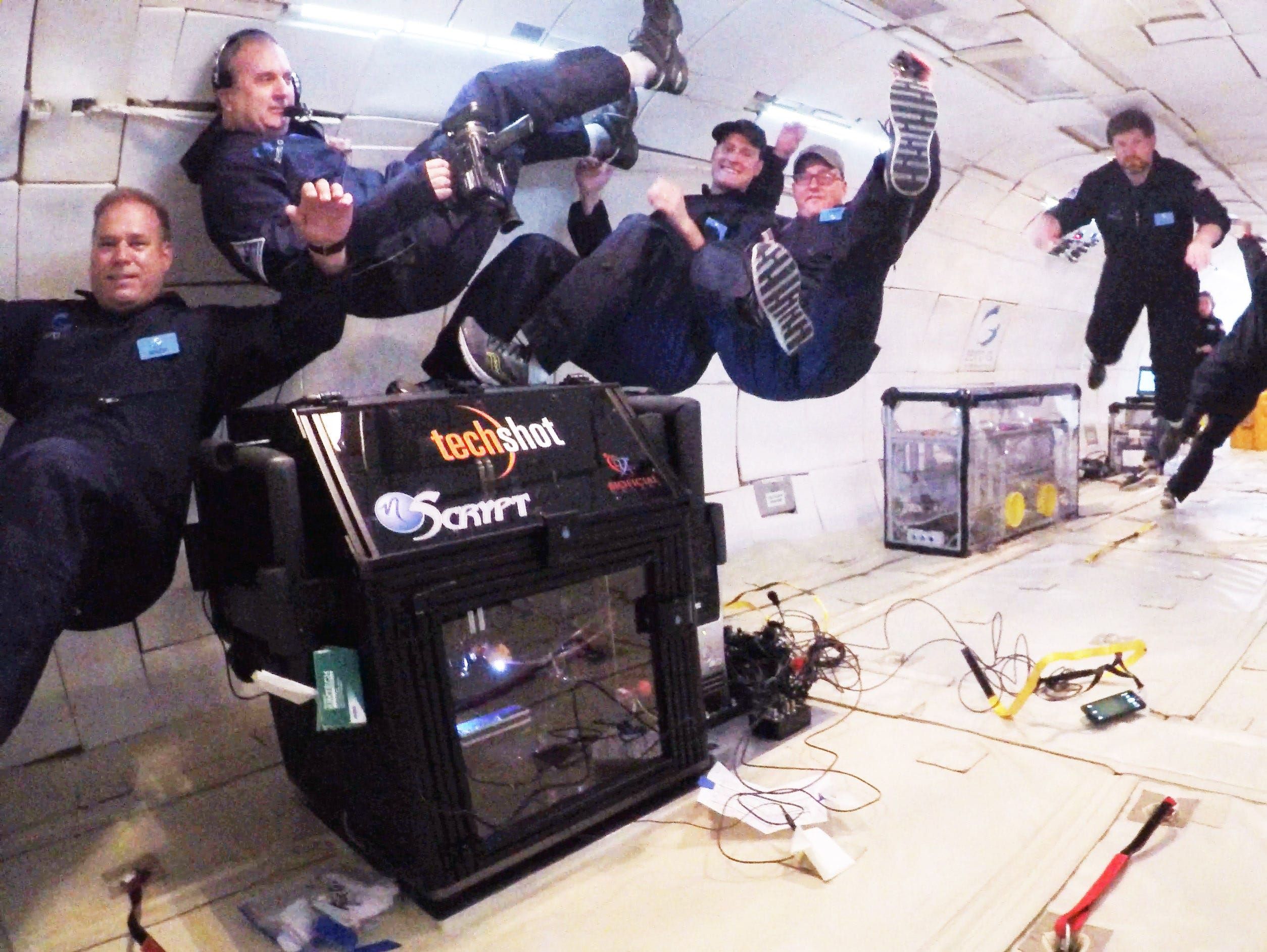Techshot 3D Prints Infant Heart In Space
 Ultimately
Ultimately
Subscriber Benefit
As a subscriber you can listen to articles at work, in the car, or while you work out. Subscribe NowA southern Indiana company has completed a space mission that reads like science fiction: it 3D printed a neonatal heart in 22 seconds—the machinery operated by engineers-turned-astronauts who floated nearby. Greenville-based Techshot’s ultimate goal is to harness the power of 3D printing to make human organs, but for those without a biomedical degree, the project begs the question, why in space? The answer is simple: it’s impossible on Earth.
“If you try to build anything—a house, a bridge—you have to put scaffolding under it for support while you’re building it,” says Techshot Chief Scientist Dr. Eugene Boland. “Tissue isn’t any different. Your heart has a lot of open chambers in it, so when you’re printing it on the ground…you’d have to build, essentially, scaffolding underneath to hold it as you’re building it.”
But building organs in the weightlessness of space eliminates the need for such “scaffolding.” Techshot’s bioprinter generates the structure layer by layer—each one several times smaller than a human hair.
“[In space], you don’t have to worry about support material, making it stiff or all the gravity effects,” says Boland. “It’s all about the biology now.”
An important part of that biology is the material, or bioink, the printer uses to create the structure. Partnering with Louisville-based Bioficial Organs, Techshot created a proprietary blend of adult stem cells, proteins and other growth factors to create “ink” that Boland says “we simply couldn’t print with on the ground.”
During the June test flight with space tourism company Zero Gravity Corporation, Techshot used the material to print the lower half of an infant’s heart in less than 30 seconds. It was one of eight structures printed in zero gravity during the flight. The modified Boeing 727 aircraft performed repeated arcs over the Gulf of Mexico to create short bursts of weightlessness, during which Techshot says the bioprinter worked “flawlessly.”
Ultimately, Techshot envisions printing human organs at the International Space Station using its bioink, then allowing the tissue to mature and grow for about a month; Boland says “there’s a big leap between the cells and protein in the bioink and a completed tissue.” Techshot believes an organ, brought back to Earth, would be “indistinguishable” from normal tissue.
“We all know there are a lot of people on organ transplant lists who die simply because we don’t have transplant organs,” says Boland. “We can take stem cells from a patient, mix it with the proper bioink for the organ we want to regenerate, fly it to station, print and mature that organ, then fly it back for transplant in that patient. It’s a customized organ for the patient, produced in space, brought back to Earth for that patient.”
While it may sound far-fetched, Techshot aims to have a space-produced, transplantable organ back to Earth before 2024. Producing such organs is Techshot’s commercial plan, but there’s also great interest from NASA as it works toward a manned, long-term mission to Mars. Flying an astronaut back to Earth for a major health issue would require about 11 months; Techshot believes no other piece of equipment would provide the same utility in space and help save astronauts’ lives.
In fact, NASA is promising a $500,000 prize for the first team to overcome what Boland says is the “Achilles heel” of the tissue engineering industry: a one-centimeter-thick human tissue that’s vascularized, which means blood can flow in and out of the tissue. This is another sweet spot for Techshot; the company is perfecting a process that generates major human blood vessels from a patient’s own stem cells. Funded by $1 million from the Pentagon’s Defense Health Program, the technology aims to prevent amputations among soldiers with blast injuries.
The next immediate goal for Techshot is building a smaller bioprinter to launch on board a commercial Blue Origin space capsule in January 2017; because the flight is unmanned, the printer will need to operate autonomously. In 2018, Techshot aims to print thicker, more complex tissues at the International Space Station, such as a beating human heart patch.
Despite its physical location in Greenville, Techshot’s sights are set on space; it believes the mission—which sounds impossible to most earthly beings—is simply the next chapter in its long history of developing equipment for spaceflight.
Boland says the project is thriving due to the expertise of its three collaborators: Techshot, nScrypt and Bioficial Organs.
Boland explains the need to 3D print a beating heart patch at the International Space Station.
Boland says NASA is interested in bioprinters as it works toward a manned, long-term mission to Mars.
